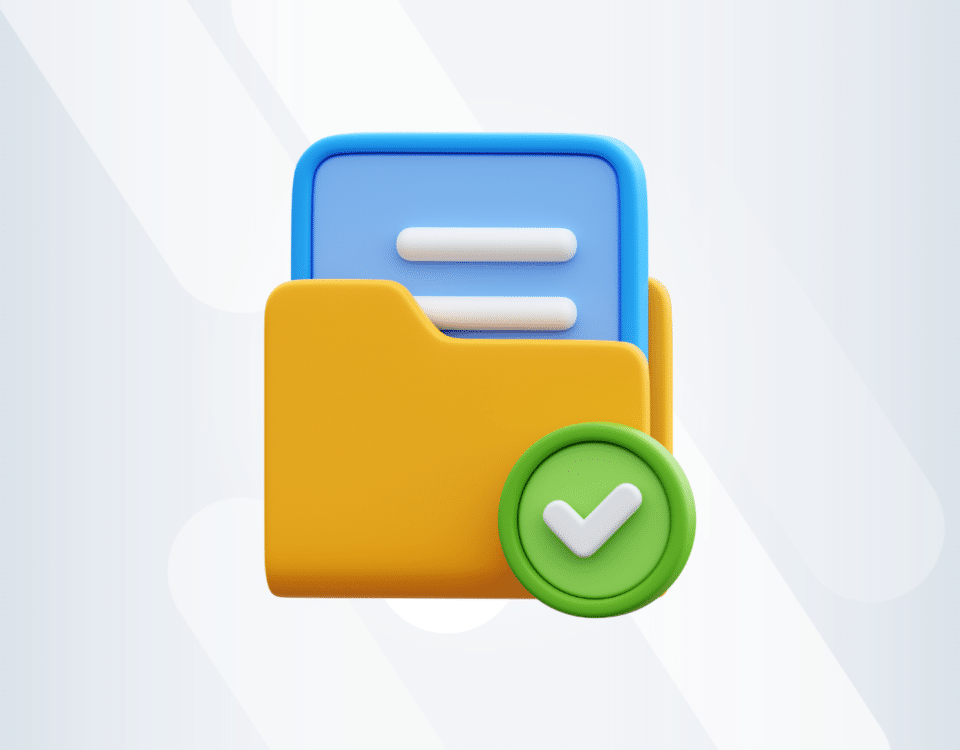Construction Tips, News & Best Practices
Construction Accounting 101
The Essential Guide for Non-Accountants (2023)

Danny Mitchell
Head of Content Marketing
Construction accounting. Sure, it doesn’t exactly get the blood racing - but if you’re the owner of a building firm, your business depends on getting it right.
Unfortunately, even those well-versed in the world of expenses, invoices and accounts payable will find construction a unique challenge.
So where do you start? What are your legal obligations? Is there a ‘right’ way to manage payments and balance your books?
These are the questions we’re going to get to the bottom of. To do that, we’re going to take a deep dive into the following topics:
- The basics: General accounting practices and where to start
- The unique challenge of accounting in construction
- Where to start with project-based billing
- What to look for from your accounting tools
Getting to grips with the GAAP
Construction accounting has plenty of unique challenges – more on that below. But first, the basics.
All listed companies from construction to small retailers have a set of guidelines they must first grapple with before we start thinking about contractors, subcontractors, revenue forecasting and the like.
In the UK, these guidelines are codified in the GAAP, or ‘Generally Accepted Accounting Principles’.
Long story short, it’s the bedrock of accounting. The good news here is that the rules for construction in the UK are largely the same as for standard businesses.
These are based on a series of 10 ‘principles’ or guidelines:
- Regularity – Organisations should consistently follow the principles of GAAP and avoid tactics that violate it.
- Consistency – You should use the same accounting standards from year to year, allowing stakeholders and others to easily compare figures over time.
- Sincerity – Be honest and unbiased in your financial reporting.
- The permanence of methods – Similar to consistency, organisations must use the same specific accounting methods and practices year on year.
- Non-Compensation – Financial information must be reported in its entirety, avoiding obfuscation and manipulation.
- Prudence – Reports should be fact-based and avoid speculation. Organisations should avoid exaggerating the price of assets or undervaluing costs.
- Continuity – Generally, you should assume the business will continue to operate, and in the same way it has previously.
- Periodicity – It’s important to report only information relevant to the accounting period, and stick to commonly accepted timelines, such as monthly, quarterly or annual reports.
- Full Disclosure/Materiality – Accounts should be disclosed fully and accurately, including full profits, loans, expenses and others.
- Utmost good faith – Accounts should be as honest as possible and assume that other companies’ accounts are similarly truthful.
In short: Tell the truth, tell the whole truth and tell nothing but the truth.
The guidelines are published by the government and updated regularly, but it’s worth pointing out that other countries also have their own similar GAAP regulations, including the USA and Canada.
Though these are often similar, it’s important to make so make sure you’re checking UK government or affiliated sources to avoid accidentally falling foul of the guidelines.
A good place to start is this overview from the Institute of Chartered Accountants in England and Wales.

The challenge of construction industry accounting
Here’s where things start to get tricky. Construction comes with a set of unique challenges that make accounting difficult.
Unpredictable costs
Each project is different, with its own timescales, requirements and labour force. Forecasting construction costs between different projects is difficult when each has so little in common with the next.
Moving parts
Construction is inherently unpredictable. Factors such as the weather, availability of subcontractors, supply chains and others can all affect the project's progress.
Long-time scales
Projects can often run for several months or years, making it difficult to attribute costs and revenue to a particular accounting period.
Multiple outgoings
You’ll generally be working with multiple subcontractors, in various places, on different projects, each with their own terms and payment dates.
Changing goals
Scope and priorities often change at short notice. You need to adapt quickly without breaking the budget.
Put simply, construction accounting is time-consuming and unpredictable, making cash flow and forecasting inherently opaque.
So how do you tell whether a project is on budget? How do you manage payroll, cash flow and expenses for projects that might not be complete for another year? And how do you tell whether your accounts are balanced?
This, at its core, is one of the key challenges the construction industry faces:
"One of the most common issues we hear daily from construction professionals is their inability to track real-time costs, get clear visibility of the financial health across all their projects, and ensure they're staying within budget."
These questions aren’t easy to answer. But the financial health of your business relies on understanding these challenges, both by project and business-wide, at all times.
Construction projects generally have high costs and small margins, meaning the price of getting it wrong is high. That’s a big risk, particularly for SMEs, who may not have the working capital to survive a project or budget collapse.
So where do you start?
Check out this related article on using construction codes to help manage costs.
Getting to grips with financial management
To manage these challenges, a construction company will generally work to a system called cost value reconciliation (CVR).
This means bills will be based on the percentage of a project that’s been completed. If you’ve completed 10% of the project in the last quarter, you’ll get 10% of the agreed funds.
The goal here is to break long-term projects down into bitesize chunks, so you can start assigning costs and expenses to distinct accounting periods. This makes it easier to control costs, assess profitability and minimise overspend.
The key point is it avoids your construction firm working at risk, by balancing both the costs and profits of a project relatively evenly across its duration. So far, so understandable.
But here’s the rub: CVR is a unique process designed to meet the specific challenges that the construction industry creates. That means the tools and platforms used to manage their accounting often aren’t set up for this particular job.
The biggest example of this is in enterprise resource planning (ERP) products like Sage, Xero or Quickbooks. Construction firms of all shapes and sizes rely on tools like these to manage their accounts.
And for all intents and purposes, they do a pretty good job of dealing with tasks like accounts payable and receivable, expenses, invoices, payroll and others.
But the challenge is they’re not set up to manage CVR. So where does that leave construction companies?
Often, the solution here is an inelegant one: using your standard ERP for the basics and managing the rest in Excel or a similar generic spreadsheet tool.
This comes with its own set of complications.
Spreadsheets can be highly complex and time-consuming to update. Each new invoice or expense must be manually added for the spreadsheet to update.
That means if, for example, you’re looking at your cash flow for the last quarter, there’s a good chance the new equipment your site manager just ordered isn't included.
And that’s before we even consider the challenges of human error (we’ve all been there…), broken macros or the dreaded corrupted file.
Ultimately, spreadsheets make it uniquely difficult to get a clear view of your financial data, even if your ERP does a good job of managing the basics. And without this oversight, you can’t make effective business decisions.

Making CVR work for you
So what’s the solution? Is it time to bin your ERP entirely? Do you need to build an entirely new platform from scratch?
Thankfully not. If your ERP is managing, say, 80% of your financial management processes perfectly fine, then there’s certainly no need to reinvent the wheel here. Instead, let’s focus on improving your processes for the other 20%. There are several specialist products that either integrate with or work alongside a traditional ERP to manage those extra elements of construction industry accounting.
Of course, we think Archdesk is by far the best, but regardless of which construction management software you choose, there are several key priorities and features you need to look out for:
Real-time updates
Information needs to be captured, uploaded and updated in real-time, so the charts you’re looking at reflect the actual current state of your accounts.
Earned value analysis
Earned value analysis (EVA) helps calculate work performed vs. work outstanding – helping you calculate the progress of your project. This is essential for effective CVR.
Widespread integrations
Any platform you choose needs to integrate easily with your existing systems, including your ERP and any other tools used to manage payroll, financial accounting, forecasting and others.
Adaptability
As the old adage goes: man plans, fate laughs. No construction project goes 100% to plan – so you need to make sure your tools are easily adaptable and that you can instantly see the trade-offs and ramifications of last-minute changes.
Getting concrete results from your construction accounting software
Taken together, these tools can help manage priorities, forecast budgets and let you proactively spot risk before it ruins your best-laid plans.
That, ultimately, is what effective construction management is all about: To keep projects on time and budget, adapt quickly and avoid costly mistakes. Beneath all the complexity that really is the goal of good construction accounting. And if you can get that right, you’re well on the way to nailing the challenge and balancing the books once and for all.
If you want to dive deeper into the pros and cons of specific construction accounting software tools, check out our recent recap of the runners and riders.
Frequently Asked Questions (FAQs)
What type of accounting is used in construction?
By far the most common and useful method of accounting is the percentage of completion method, where costs are billed as a proportion of how complete the project is. This allows you to balance costs and expenses over the lifetime of a project.
How do you account for construction?
Construction accounting has its own unique set of challenges. To manage these, businesses use a process called cost value recognition, which lets you calculate the progress of a project based on how close it is to being complete.
What is GAAP construction accounting?
The generally accepted accounting principles (GAAP) are a list of guidelines that all listed UK businesses must adhere to, including construction companies.
Why is construction accounting different?
Construction accounting is uniquely difficult because of the unpredictable nature of projects, the long timescales and the number of moving parts involved.
You might also like
February 29, 2024 • 7 min read
Utilizing the human-first approach to construction projects to drive higher results.
July 3, 2023 • 6 min read
8 Best Construction Drawing Management Software (2023): A Comprehensive Guide
Find all the information you need about the construction drawing management software tools available on ...June 14, 2023 • 6 min read
The 11 Best PlanGrid Alternatives (2023)
Looking for a great alternative to PlanGrid software? Check out the 11 best construction software tools ...June 14, 2023 • 4 min read
How to win at CIS 340 and make taxes a breeze
CIS 340 is a legal obligation for contractors. But getting it right isn’t straightforward. Want ...




